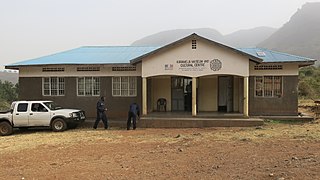| ID | Site name | Description | District | Location | Original function | Coordinates | Image |
|---|
| UG-E-001 | Obalanga Memorial | Mass grave for 365 brutally killed & buried here.commemoration is held 15th-june. | Amuria | | | | 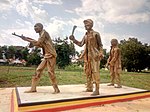 More images More images Upload another image |
| UG-E-002 | Kaperabyong memorial | Mass grave and site. | | | | | Upload an image |
| UG-E-003 | ? | | Budaka | | | | Upload an image |
| UG-E-004 | ? | | Bududa | | | | Upload an image |
| UG-E-005 | Busoga Hill-Bukoli shrines, Buwunga | Believed to be the origin of Busoga. Visited by women with fertility problems. | Bugiri | | | | Upload an image |
| UG-E-006 | Wakooli shrines/palace | A Nsona- Namakoko, Prince Wakoli Kaunhe, King of Bukooli and his father Musitwa Ibrahim’shrines in Nankoma subcounty. | | | | | Upload an image |
| UG-E-007 | Wakoli’s grave | Kaunhe Wakolis grave near Nsono primary school Namakoko. | | | | | Upload an image |
| UG-E-008 | Wakoli’s Fort | At Nsona- Namakoko, Bugiri. Site for 1891 – 1893 IBEA | | | | | Upload an image |
| UG-E-009 | Kirongo shrines of Bukooli | Near Kirongo hill, at Bubugo village. | | | | | Upload an image |
| UG-E-010 | Iyirimbi forest | Traditional cultural forest resource | | | | | Upload an image |
| UG-E-011 | Prayer feast tree | In Muterere | | | | | Upload an image |
| UG-E-012 | Komuge rock art site | Rock art site. | Bukedea | | | |  More images More images Upload another image |
| UG-E-013 | Bukwa Fossil site | Fossil site on lamitima hill | Bukwa | | | | Upload an image |
| UG-E-014 | Khepcwalini Caves | The cave is at Tulel, Kong’ Asis County, and 3 miles out of Ka pron, Bukwa Road . | | | | | Upload an image |
| UG-E-015 | Kabei caves | Bukwa sub county 38 miles from Kapcholwa. | | | | | Upload an image |
| UG-E-016 | Sing’ora | Near Bukwa sub county head quarters 3 miles toward Mt Elgon. | | | | | Upload an image |
| UG-E-017 | ? | | | | | | Upload an image |
| UG-E-018 | ? | | Bulambuli | | | | Upload an image |
| UG-E-019 | Bishop Hannington resting place, Budimo village grave | Omutaabi tree | Busia | | | |  More images More images Upload another image |
| UG-E-020 | He and she Cave (Dubelo) at Kachonga | | Butaleja | | | | Upload an image |
| UG-E-021 | Hagulu at Mulagi | | | | | | Upload an image |
| UG-E-022 | ? | | | | | | Upload an image |
| UG-E-023 | Balawooli? | | Buyende | | | | Upload an image |
| UG-E-024 | Kigulu hills | Shrines for the Ngobi clan at Namata ,near the railway. | Iganga | | | |  More images More images Upload another image |
| UG-E-025 | Bubali Buswikira Shrines | Rocks at the burial place of Kintu with Foot marks of Mutyabule .Has become a shrine. | | | | | Upload an image |
| UG-E-026 | Kabuli hill | Natural site at Nawandala Subcounty. | | | | | Upload an image |
| UG-E-027 | Bugweri cultural site | At Nondwe is a Place for cultural rituals for Baisemenya. (near Ziraba Muzales Place.) | | | | | Upload an image |
| UG-E-028 | Namagera rock shrines | Near Budumba Bridge at Namagera village. | | | | | Upload an image |
| UG-E-029 | Nasuti palaces | Ngobi Kigulus palace and burial site for princess Walusansa,Nyiro,Oboja . | | | | | Upload an image |
| UG-E-030 | Nhenda hill | At Kigulu , palace and tombs of the Omukama Nantamu. | | | | | Upload an image |
| UG-E-031 | Bukoyo Footprints | Footprints reported by Ziraba Muzaale in 1967. | | | | | Upload an image |
| UG-E-032 | Namato Rocks | Male and female near Namato primary school | | | | | Upload an image |
| UG-E-033 | Jinja Rocks | Origin of name Jinja | Jinja | | | | 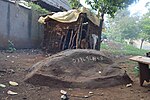 More images More images Upload another image |
| UG-E-034 | Busoga Admin post | Naliyanya | | | | | Upload an image |
| UG-E-035 | Spire memorial/Mpumudde hill | Historical meeting place for Busoga chiefs. Omukama Kabalega died here while on return from Seychelles exile | | | | | 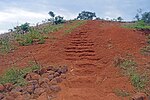 More images More images Upload another image |
| UG-E-036 | Speke monument | Monument signifying Speke sighting of the Source of the Nile | | | | | 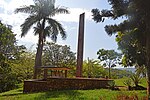 More images More images Upload another image |
| UG-E-037 | Mahatima Gandhi monument | Also found at the Source of the Nile | | | | | 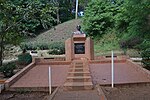 More images More images Upload another image |
| UG-E-038 | Source of the Nile (marker) | Source of life for many great civilizations. The Nile is the longest river in Africa. The source was sighted 1861 by Speke. | | | | | 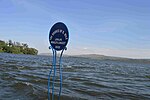 More images More images Upload another image |
| UG-E-039 | Igenge palace | At Namasoga is the palace for Kigulu Chiefs ,Izimba. | | | | | Upload an image |
| UG-E-040 | Bujjagali ancestral site | | | | | |  More images More images Upload another image |
| UG-E-041 | Kyabazinga palace, Nakabango | Personal home of the late Kyabazinga of Busoga, Henry Wako Muloki. | | | | | Upload an image |
| UG-E-042 | Kyabazingas palace at Wanyange | Official residence of Busogas’ Kyabazingas | | | | | Upload an image |
| UG-E-043 | Jinja African Commonwealth war Cemetery | 170 burials | | | | |  More images More images Upload another image |
| UG-E-044 | Jinja European commonwealth war cemetery | 5 burials | | | | | Upload an image |
| UG-E-045 | Jinja catholic commonwealth cemetery. | 1 burial | | | | | 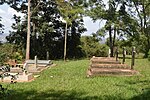 More images More images Upload another image |
| UG-E-046 | Jinja Pier | Landing site at Jinja | | | | | 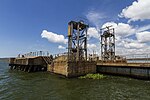 More images More images Upload another image |
| UG-E-047 | Mwiri hill | Archaeological site | | | | | 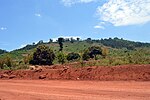 More images More images Upload another image |
| UG-E-048 | Napyangates Burial Ground | Burial Grounds for Lionel Dumore Pennington Leutinant the rptal engineers | Kaberamaido | | | | Upload an image |
| UG-E-049 | Akokoma salt / iron site. | Traditional salt making site | | | | | Upload an image |
| UG-E-050 | Buguge rock shelter/ shrines | In Saaka parish. Home to Lamogi chiefs, first settlement of Mukama | Kaliro (Busoga Royal Town) | | | | Upload an image |
| UG-E-051 | Wako Zibondos Mahomo ancestral palace. | At Naigobya village, Gadumile in Bulamogi county, Busoga King, 1893 to 1952.( Palace and tombs of the late Zibondo) Tombs next to Kaliro Primary Teachers College and of Henry Waako Muloki.( | | | | | 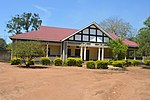 More images More images Upload another image |
| UG-E-052 | Iyingo | In the 16th- Century –Amunyoro Prince Mukama Namutukula came with wife Nawudo and settled in Iyingo | | | | | Upload an image |
| UG-E-053 | St Gonzaga Gonza shrine . | Namugongo subcounty Bulamogi County. | | | | | 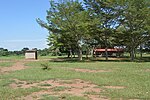 More images More images Upload another image |
| UG-E-054 | Imarai caves | Madibira Village. | | | | | 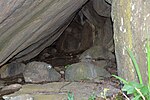 More images More images Upload another image |
| UG-E-055 | Kafamba Rock Rock | Kisinda | | | | | 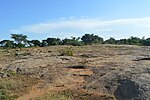 More images More images Upload another image |
| UG-E-056 | Nawampiti Rock | Nawaikoke | | | | | Upload an image |
| UG-E-057 | Historic Muvule Tree | Bumanya | | | | | 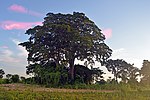 More images More images Upload another image |
| UG-E-058 | Namasagali landing site | Kamuli ,Kabaganda near Nasagali college | Kamuli | | | | 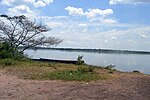 More images More images Upload another image |
| UG-E-059 | Budhumbula Royal Tombs and Mausoleum. | I)Yosiya K Nadiope ii)Sir William Wilberforce Nadiope iii) Dr Anold Nadiope’s burial grounds. Nabiwigulu subcounty Kamuli District." | | | | |  Upload another image |
| UG-E-060 | Budiope Tombs | | | | | | Upload an image |
| UG-E-061 | Nnenda hill ,Kagulu | Kagulu Sub-county in Budiope. | | | | |  More images More images Upload another image |
| UG-E-062 | Itanda Falls | | | | | |  More images More images Upload another image |
| UG-E-063 | Mise caves | Cultural site near Sipi falls | Kapcworwa | | | |  More images More images Upload another image |
| UG-E-064 | Kapyopyoni site | Farm house and archaeological site at Kirwat. | | | | | Upload an image |
| UG-E-065 | Kaproron | Kong ‘asis Headquarters, 14 miles from Kapchorwa it over looks Mt Debesian in Karamoja and Kapenguria & Turkana parts of Kenya. | | | | | Upload an image |
| UG-E-066 | Ngwat | At Chema, sipi. One mile out of Mbale-Kapchorwa road | | | | | Upload an image |
| UG-E-067 | Munarya Caves | Over looks sipi rest camp | | | | |  More images More images Upload another image |
| UG-E-068 | Kapter, | Kapchorwa headquarters salt rock for herdsmen\ Ramkot, Sikeryo,Chepkoikoch | | | | | Upload an image |
| UG-E-069 | Tabikwat and Kabungolo | Kaproron subcounty | | | | | Upload an image |
| UG-E-070 | ? | | Katakwi | | | | Upload an image |
| UG-E-071 | ? | | Kibuku | | | | Upload an image |
| UG-E-072 | Nyero rock paintings | Rock art | Kumi | | | |  More images More images Upload another image |
| UG-E-073 | Mukongoro paintings. | Rock art | | | | | Upload an image |
| UG-E-074 | Mukura Memorial | People suffocated in a Container here. | | | | | Upload an image |
| UG-E-075 | Kopege, Kakungulu fort | Near Kopege(oleicho)primary school | | | | | Upload an image |
| UG-E-076 | Obwini rock paintings | Ayama village, Kumi, orumi primary school. | | | | | 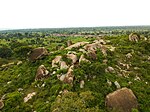 More images More images Upload another image |
| UG-E-077 | ? | | Kween | | | | Upload an image |
| UG-E-078 | ? | | Luuka | | | | Upload an image |
| UG-E-079 | ? | | Manafwa | | | | Upload an image |
| UG-E-080 | Kyando memorial | The place where Bishop Hanington was killed while on his way to Buganda | Mayuge | | | | Upload an image |
| UG-E-081 | Fort Thurston Bukaleba | Fort Thurston was built in memory of the three Europeans killed in Lubas fort(nearby) in 1897 by Sudanese soldiers. | | | | | Upload an image |
| UG-E-082 | Bukaleba caves | Caves that resided soldiers that kept the Lubas ad/Busogas first administrative posts. | | | | | Upload an image |
| UG-E-083 | Lubas Monument | At Imanyiro built in burnt bricks, at a place where lubas fort stood. | | | | | Upload an image |
| UG-E-084 | Iyingo Landing site | Fishing village/Market and cultural landscape | | | | | Upload an image |
| UG-E-085 | Mawuta Forest | Traditional Cultural forest resource | | | | | Upload an image |
| UG-E-086 | Meru Forest | Traditional Cultural forest resource | | | | | Upload an image |
| UG-E-087 | Wanumbe Forest | Traditional cultural forest resource | | | | | Upload an image |
| UG-E-088 | Bumutoto Circumcision site | In Bunghoko Mbale is the official circumcision site for the start of ceremonies. | Mbale | | | | 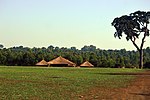 More images More images Upload another image |
| UG-E-089 | Budaka fort/residence | Residence of Semei Kakungulu Nabweya near Nabumali high school | | | | | Upload an image |
| UG-E-090 | Kakungulus tombs | Tombs for the descendants of Kakungulu,near Nabweya primary school | | | | |  More images More images Upload another image |
| UG-E-091 | Miyingo Cultural Site | | | | | | Upload an image |
| UG-E-092 | Dolwe Island | Rock paintings ,gongs and carpules near Golofa hills | Namayingo | | | | 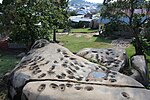 More images More images Upload another image |
| UG-E-093 | Wayasi | On Sigulu island marking the border of Kenya and Uganda. | | | | | Upload an image |
| UG-E-094 | Namato Rock | At Kigalama, is a Site for the Mukembe clan, has two wells a male and a female | Namutumba | | | | Upload an image |
| UG-E-095 | Kapir Rock paintings | Rock art Paintings | Ngora | | | |  More images More images Upload another image |
| UG-E-096 | Opege fort | One of Kakungulus several forts built 1900 | | | | | Upload an image |
| UG-E-097 | Mukula Monument | People were massacred ,suffocated in a container. | | | | | Upload an image |
| UG-E-098 | Onyeri rock paintings | Rock art | | | | | Upload an image |
| UG-E-099 | Kakoro rock paintings | 3 rock art paintings sites within the granite rock. | Pallisa | | | | 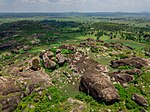 More images More images Upload another image |
| UG-E-100 | Kakungurus fort | | | | | | Upload an image |
| UG-E-101 | Nyakiringa teo cultural site | | | | | | Upload an image |
| UG-E-102 | ? | | Serere | | | | Upload an image |
| UG-E-103 | Greek river Fossil site | Around greek river are several geological fossil sites. | Sironko | | | | Upload an image |
| UG-E-104 | Obwin rock painting | White paintings | Soroti | | | | Upload an image |
| UG-E-105 | Soroti Museum | Old Mbale road | | | | | Upload an image |
| UG-E-106 | Tororo rock and caves | Geological Monument , with rock shelters/ scenic landscape. A tourist attraction . | Tororo | | | |  More images More images Upload another image |
| UG-E-107 | Commonwealth War Graves | 2nd World War Common wealth war victims Cemetery. | | | | |  More images More images Upload another image |
| UG-E-108 | Muhana Footmark | At Mulanda, is a footprint and cross on the rock. | | | | |  More images More images Upload another image |
| UG-E-109 | Tororo mines | Established to exploit cement. | | | | |  Upload another image |
 More images
More images  More images
More images  More images
More images  More images
More images  More images
More images  More images
More images  More images
More images  More images
More images  More images
More images  More images
More images  More images
More images  More images
More images  More images
More images  More images
More images  More images
More images  More images
More images  More images
More images  More images
More images  More images
More images  More images
More images 
 More images
More images  More images
More images  More images
More images  More images
More images  More images
More images  More images
More images  More images
More images  More images
More images  More images
More images  More images
More images  More images
More images  More images
More images  More images
More images  More images
More images 















